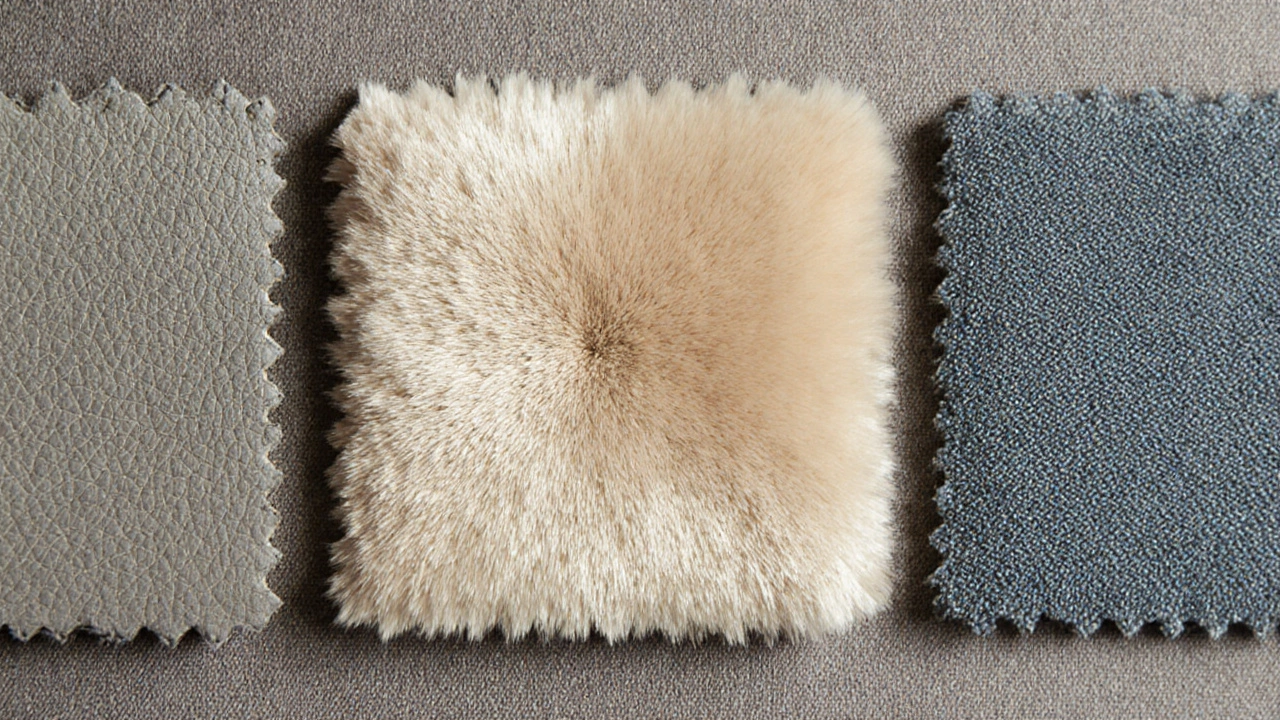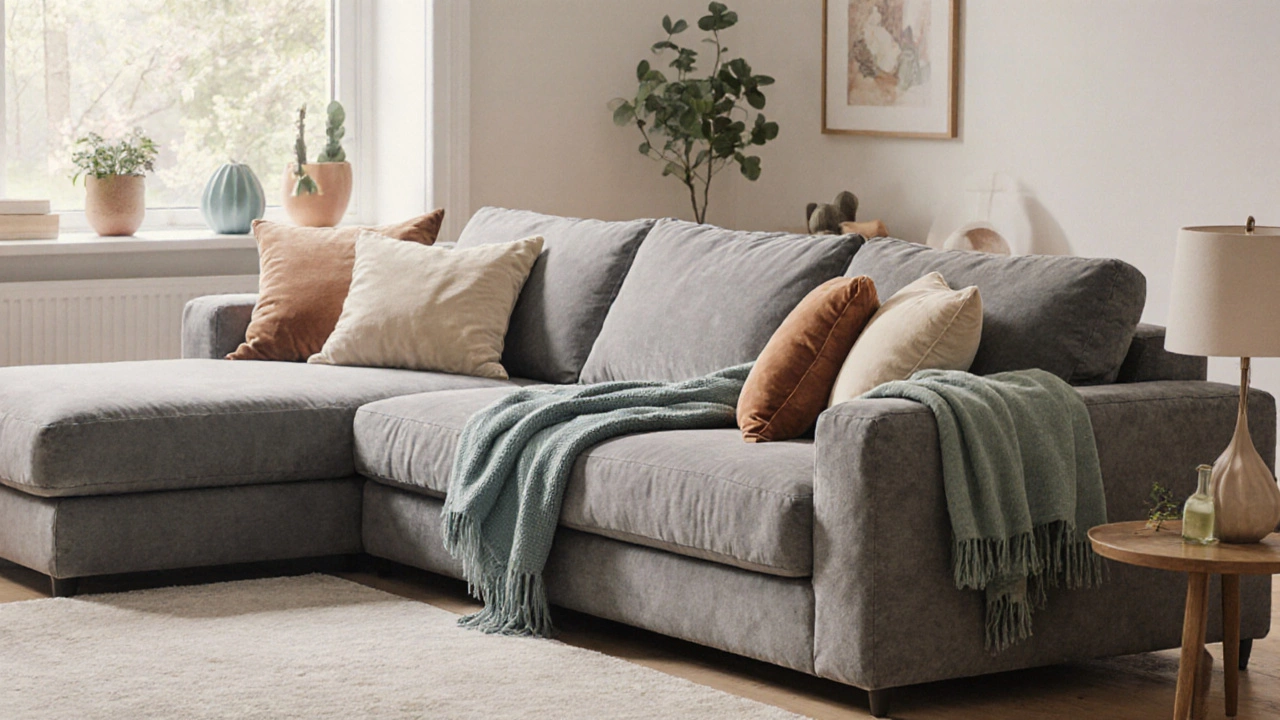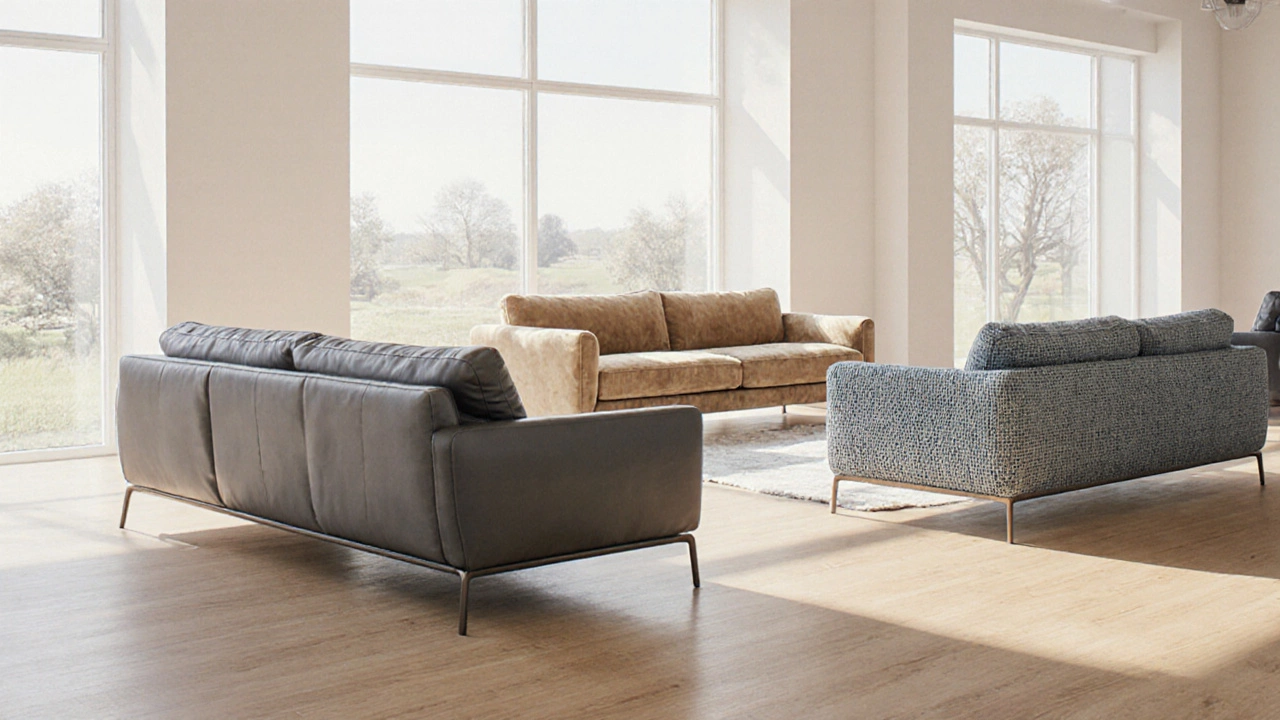Sofa Color Match Calculator
Find Your Perfect Sofa Color
Based on 2025 market trends and your living room needs, this tool recommends the best sofa color for your space.
Recommended Color
Why this color? Based on your preferences, this color matches 2025 trends while fitting your lifestyle. Grey is the most popular choice (38% of sales) for its versatility and durability.
Ever walked into a showroom and wondered why so many sofas look the same? The answer lies in color trends. In 2025 the most popular sofa color isn’t a bold red or bright yellow - it’s a set of calm, versatile shades that fit almost any living‑room style.
Quick Takeaways
- Grey remains the #1 sofa color, followed by beige and muted blue.
- Natural textures like leather and velvet boost a color’s appeal.
- Data from Statista, Houzz and Pinterest show a clear shift toward neutral palettes.
- When buying, match the sofa color to your room’s existing palette, not the other way around.
- Consider durability - darker greys hide wear better than light tones.
What "Sofa" Really Means
Sofa is a Upholstered seating piece designed for multiple occupants, typically placed in a living‑room or lounge area. While the word covers everything from compact loveseats to sprawling sectional units, the colour discussion usually focuses on the main frame and upholstery fabric.
How We Got the Numbers
We pulled data from three industry‑grade sources:
- Statista provides quarterly sales breakdowns for major UK furniture retailers
- Houzz tracks the most‑saved design photos by colour tag
- Pinterest reports pinning trends for home‑decor keywords
All three platforms point to the same three colours dominating the market.
2025 Colour Rankings
| Rank | Colour | Market Share | Typical Materials |
|---|---|---|---|
| 1 | Grey - a cool, mid‑tone neutral | 38 % | Leather, microfiber, linen |
| 2 | Beige - warm, creamy neutral | 27 % | Velvet, cotton blends, faux‑leather |
| 3 | Muted Blue - soft denim‑like hue | 15 % | Velvet, woven polyester |
| 4 | Olive Green - earthy, subdued tone | 9 % | Leather, heavy‑weight linen |
| 5 | Charcoal - deep, almost black grey | 8 % | Microfiber, processed leather |
Why Those Colours Win
Three big forces shape colour choice:
- Versatility. Grey, beige and muted blue pair easily with wood, metal or glass accents. That means homeowners can change décor pieces without buying a new sofa.
- Perceived durability. Darker greys and charcoals hide stains and wear better than light beiges, especially in homes with kids or pets.
- Emotional comfort. Neutral tones create a calm backdrop, which aligns with the post‑pandemic desire for soothing interiors.
In contrast, bright reds or neon greens perform poorly because they clash with most flooring and wall paints.

Choosing a Colour for Your Space
Follow this quick decision tree to land on the right shade:
- Do you have a dominant wall colour? If yes, pick a sofa that complements rather than matches.
- Do you have kids or pets? If yes, lean toward darker greys or charcoal.
- Is your room small? If yes, use light beige or muted blue to open up the space.
- Do you love bold accents? If yes, choose a neutral base (grey) and add colourful cushions.
This approach saves you from buyer’s remorse and ensures the sofa fits the long‑term style of your home.
Materials Matter
The colour you see on a fabric swatch can shift once it’s upholstered. Here’s what to expect:
- Leather often deepens colour over time, especially in sunny rooms.
- Velvet reflects light, making muted blues appear richer.
- Microfiber holds colour very well and resists fading.
If durability is a priority, microfiber‑grey is the safest bet; for a luxurious feel, go velvet‑beige.
Checklist Before You Buy
- Measure your seating area - leave at least 75 cm of walk‑around space.
- Confirm the colour under the same lighting you’ll use at home (daylight vs. warm LED).
- Ask for fabric swatches in both 100 % cotton and blended variants.
- Check the warranty on colour fading - most reputable brands offer a 5‑year guarantee.
- Consider resale value - neutral tones like grey and beige retain market appeal.
Future Colour Outlook
Trends show a gradual drift toward earthier tones - think muted terracotta and soft sage - but they’ll remain niche in 2025. Expect grey, beige and muted blue to dominate sales for another 12‑18 months before the next wave of colour experimentation hits the market.

What is the most popular sofa colour in the UK right now?
Grey tops the chart with about 38 % of all sofa sales, followed by beige and muted blue.
Do bright colours ever sell well?
Bright reds, yellows or neon greens make up less than 3 % of sales because they clash with most interiors and age quickly.
How does fabric affect colour perception?
Leather darkens over time, velvet reflects light and looks richer, while microfiber holds colour most consistently.
Is a darker sofa better for families with kids?
Yes - darker greys and charcoal hide stains and wear better than light beiges or blues.
Where can I see real colour samples before buying?
Visit local showrooms, ask for fabric swatches, or use augmented‑reality apps that let you visualise the sofa in your room.


Write a comment